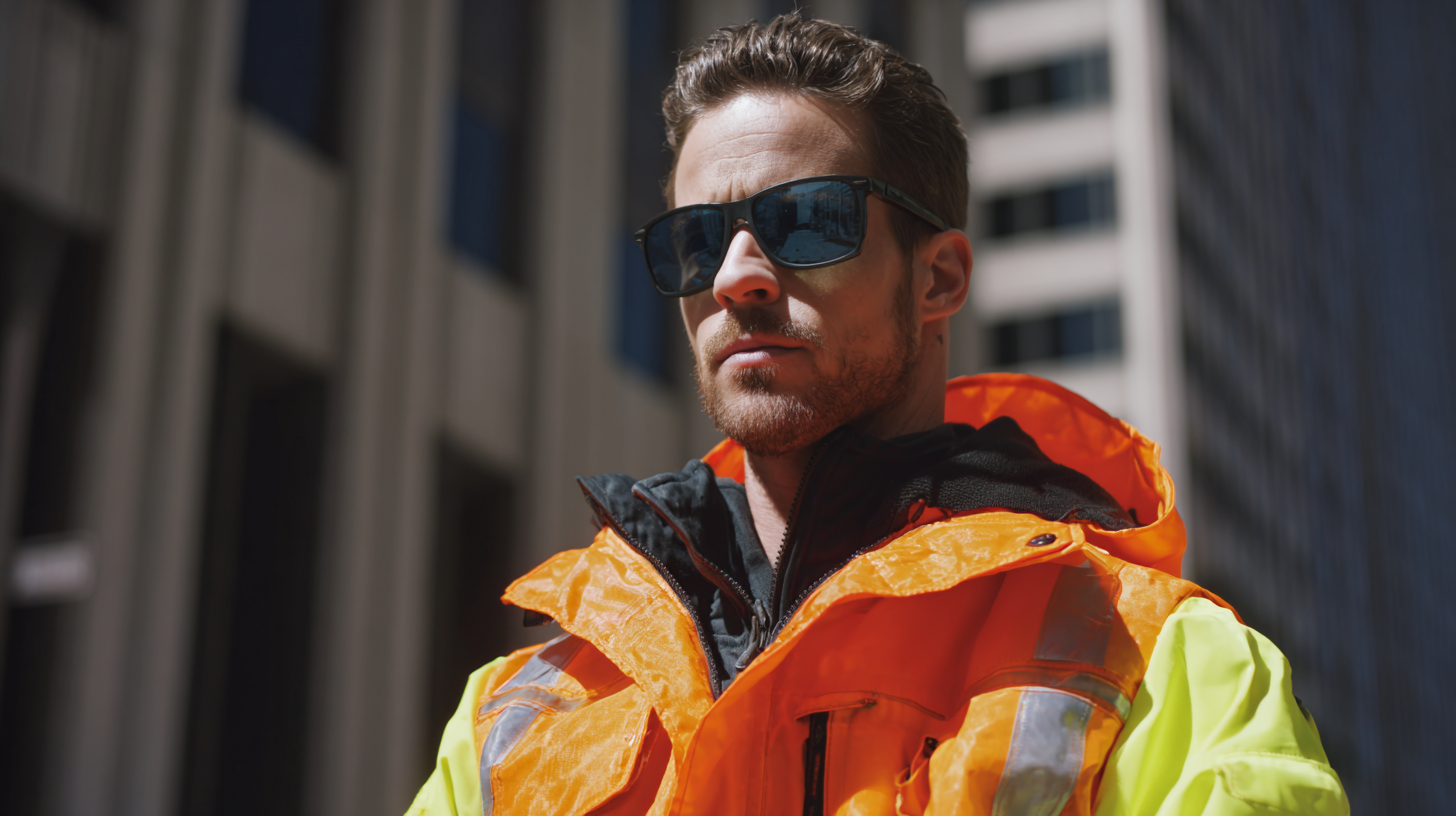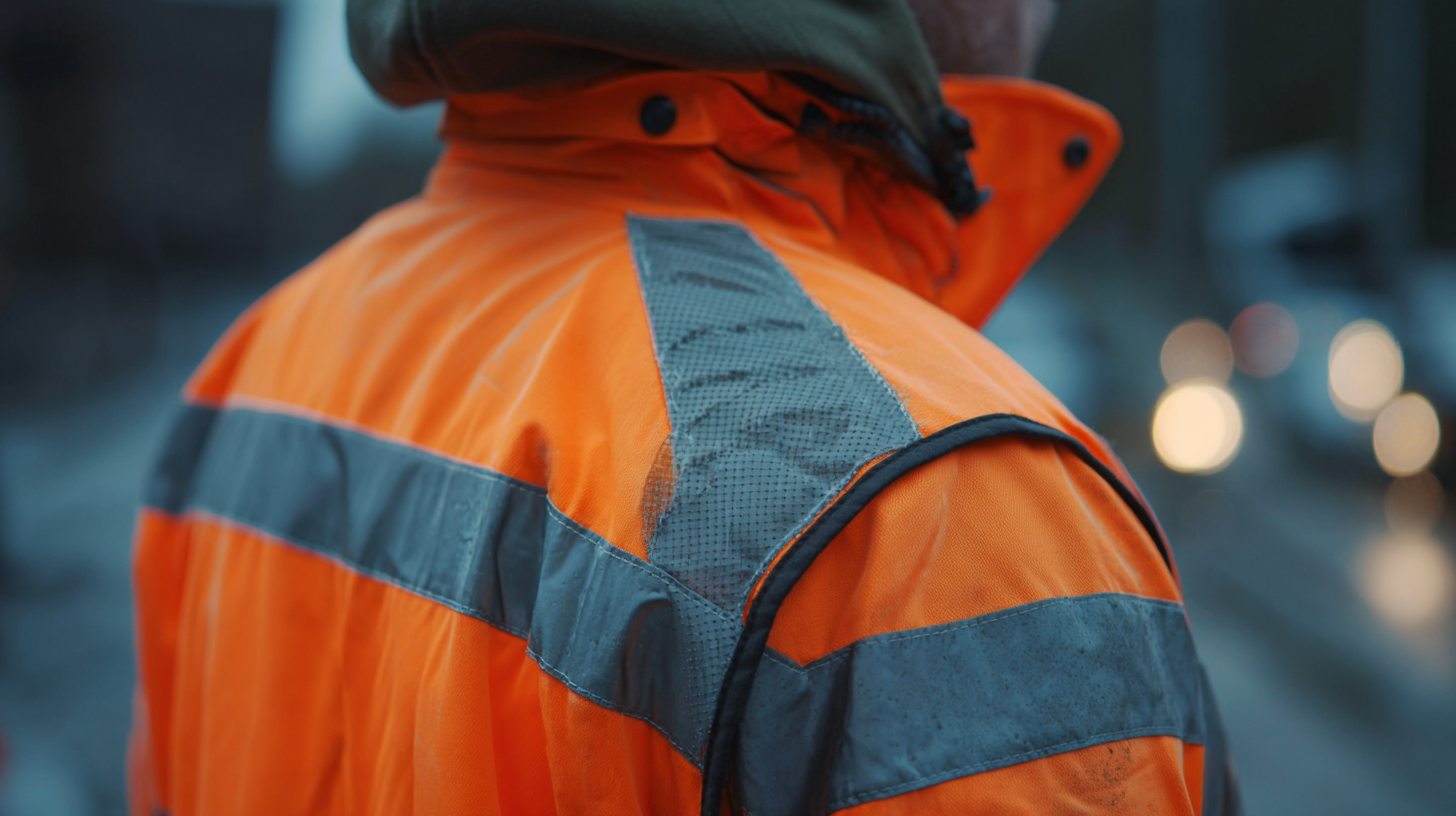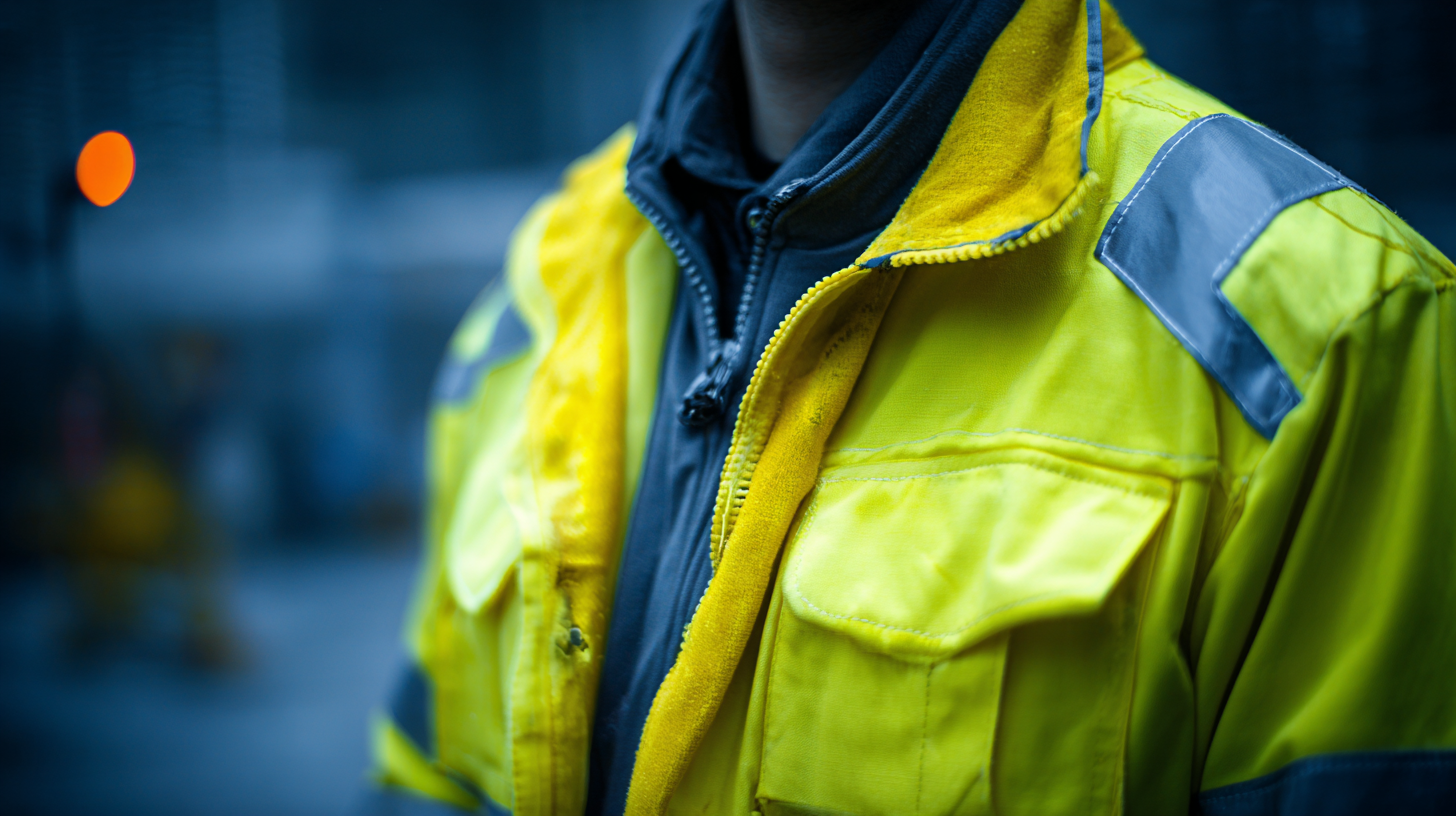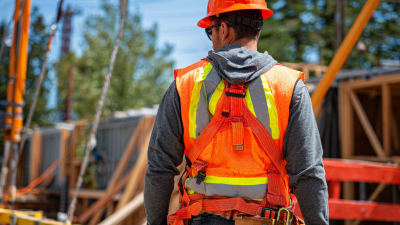In today’s fast-paced world, ensuring personal safety has never been more crucial, especially in environments where hazards abound. One essential clothing item that significantly enhances everyday protection is the Safety Jacket. Designed to be both functional and reflective, Safety Jackets play a vital role in preventing accidents by increasing visibility, particularly in low-light conditions or high-traffic areas. Whether you're working in construction, cycling, or simply navigating urban streets, wearing a Safety Jacket is a proactive measure that can safeguard against unforeseen dangers.

This article will explore the importance of wearing Safety Jackets, highlighting practical tips for selecting the right one and integrating it into your daily routine to ensure your safety remains a top priority. By understanding and embracing the benefits of this indispensable garment, individuals can significantly reduce the risk of injuries and promote a culture of safety in their communities.
When it comes to daily activities, selecting the right safety jacket is essential for both protection and comfort. High-visibility jackets are ideal for those who work in or around traffic, ensuring that you're seen by drivers and reducing the risk of accidents. For outdoor enthusiasts or workers exposed to the elements, consider jackets with waterproof and breathable materials. These features keep you dry while providing ventilation during physical activities.
Tips for choosing the right safety jacket include checking for adjustable elements such as cuffs and hems, which can enhance fit and comfort. Look for jackets with multiple pockets to store essential items securely while on the go. Additionally, consider the weight of the jacket; a lightweight yet durable design is preferable for all-day wear without becoming cumbersome.
Lastly, reflect on the specific activities you'll be engaged in. If you are likely to be exposed to harsh weather conditions, opt for insulative, weatherproof jackets. Alternatively, for more casual use, a lighter, reflective jacket may suffice. Choosing appropriately based on your daily routine will ensure you remain safe and comfortable throughout your day.
| Feature | Description | Use Case | Recommended Safety Level |
|---|---|---|---|
| Visibility | High visibility colors with reflective strips for improved safety. | Construction sites, road work. | Class 2 or Class 3 standards. |
| Weather Resistance | Material that protects against rain, wind, and cold. | Outdoor activities in inclement weather. | Waterproof and thermal rated. |
| Durability | Tear-resistant and reliable stitching for prolonged use. | Industrial work, heavy-duty tasks. | Heavy-duty classification. |
| Comfort | Breathable fabric for comfort during long wear. | Long shifts, physically demanding tasks. | Comfort-rated and ergonomic design. |
| Size and Fit | Available in various sizes for a good fit. | Personal and professional use. | Varies per body type. |
When it comes to workplace safety, the type of safety jacket worn can make a significant difference in ensuring protection and visibility. There are several types of safety jackets tailored to specific environments. For instance, high-visibility jackets, often made from fluorescent fabrics and reflective strips, are essential for workers on roads or construction sites, improving visibility by up to 200% according to the National Safety Council. These jackets are crucial for preventing accidents in high-traffic areas.

In industrial settings, flame-resistant jackets are vital for protecting against thermal hazards. According to the Bureau of Labor Statistics, around 5,000 workplace injuries involve burns annually, highlighting the necessity for specialized protective gear. Additionally, cold-weather jackets designed with insulation and waterproof materials help in maintaining body temperature in extreme conditions, essential for those working outdoors in winter months.
Tips for Choosing Safety Jackets:
1. Assess the environment: Select jackets based on specific hazards present, whether it be high-visibility, flame-resistant, or insulated.
2. Fit matters: Ensure that the jacket fits correctly to avoid any restricted movement while providing adequate coverage.
3. Regular inspections: Periodically check jackets for wear and tear, replacing them to ensure ongoing protection and compliance with safety standards.
When selecting a safety jacket for everyday protection, it's crucial to consider essential features that enhance safety and comfort. According to the Occupational Safety and Health Administration (OSHA), high-visibility clothing, especially jackets, can significantly reduce accidents in low-light conditions. Features such as fluorescent colors and reflective strips provide greater visibility, which is invaluable for workers in construction or roadside assistance. A report by the National Institute for Occupational Safety and Health (NIOSH) indicates that wearing appropriate high-visibility garments reduces the risk of being struck by vehicles by up to 30%.

Moreover, the material and construction of the jacket play a vital role in protection. Look for jackets made from durable, weather-resistant fabrics that can withstand harsh conditions while maintaining breathability. The American Society for Testing and Materials (ASTM) outlines that safety jackets should meet specific performance standards, including resistance to tearing and flame protection in certain work environments. Features like adjustable cuffs and hoods can also provide a customizable fit, ensuring that the wearer remains protected without sacrificing mobility or comfort. Integrating these safety jacket characteristics can make a significant difference in your everyday protection strategy.
Proper care and maintenance of safety jackets is crucial to ensuring their effectiveness and longevity. Regular cleaning is essential, as dirt and grime can diminish the reflective properties of the material. To clean a safety jacket, it’s advisable to follow the manufacturer's instructions, typically involving gentle washing with mild detergent and avoiding harsh chemicals that could damage the reflective elements. Air drying is preferred over machine drying to preserve the fabric's integrity.
Additionally, regular inspections are vital in maintaining the functionality of safety jackets. Look for any wear and tear, such as frayed seams or broken zippers. If any damage is observed, timely repairs or replacements should be made to ensure optimal protection. Store safety jackets in a cool, dry place away from direct sunlight, as prolonged exposure can fade colors and weaken materials, compromising safety. By adhering to proper care practices, the durability and effectiveness of safety jackets can be maximized, ensuring reliable protection in daily tasks.

Integrating safety jackets into your daily wardrobe offers an innovative solution to combine style with essential protection. With their variety of designs, materials, and colors, safety jackets can serve as fashionable outerwear while ensuring you're visible and safe in various environments. Whether you’re commuting, working outdoors, or attending events, a well-chosen safety jacket can enhance your overall look while providing the crucial visibility needed to stay safe.
Incorporating these jackets into your attire doesn’t mean sacrificing style for safety. Modern safety jackets come with sleek designs, flattering cuts, and even fashionable patterns that suit casual and business-casual outfits. You can layer them over your favorite sweaters, shirts, or dresses, allowing for flexibility in your wardrobe while promoting a safety-first mentality. By making safety jackets a staple in your everyday attire, you actively contribute to your own safety and serve as a visible reminder to others about the importance of being mindful in potentially hazardous environments.






